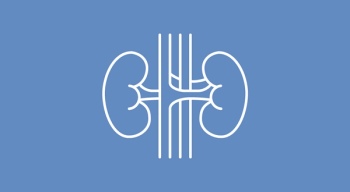
Cabozantinib prolonged PFS compared to placebo for patients with extrapancreatic NETs starting in the GI tract in a subgroup analysis of the CABINET trial.

Megan is an assistant editor at MJH. She joined the company in 2022 after graduating from UMass Amherst with majors in communication and english. When not at work, Megan enjoys fishing, spending time with her twin sister, and listening to Taylor Swift on repeat. Email Megan at mhollasch@onclive.com

Cabozantinib prolonged PFS compared to placebo for patients with extrapancreatic NETs starting in the GI tract in a subgroup analysis of the CABINET trial.

Secondary end points of the ASC4FIRST trial continue to show superior results with the use of asciminib, over standard-of-care TKIs in CML.

An expert discusses the FDA approval of obecabtagene autoleucel—the only CAR T-cell therapy given via split dosing for patients with ALL.

Asciminib is a promising agent for frontline chronic myeloid leukemia, Jorge Cortes, MD, explained.

Earlier switch to atezolizumab after run-in with vemurafenib plus cobimetinib showed promise in improving OS rates in BRAF V600–positive melanoma.

The addition of radium-223 to enzalutamide led to significant rPFS and OS benefits compared to enzalutamide alone in metastatic castration-resistant prostate cancer.

Study findings support tivozanib monotherapy for second-line treatment of certain patients with metastatic RCC, an expert said.

Hypofractionated radiotherapy was noninferior to conventional radiotherapy in patients with low-risk prostate cancer.

Patients with previously untreated chronic lymphocytic leukemia treated with venetoclax plus obinutuzumab either with or without ibrutinib experienced significant PFS improvements.

Most cancer centers reported a shortage of at least 1 systemic therapy in a survey published by the NCCN.

Treatment sequencing data indicated that most patients with HER2-positive metastatic breast cancer discontinued second-line treatment in US community practices.

Lorlatinib, compared with crizotinib, prolonged PFS and improved time to intracranial progression in ALK-positive non–small cell lung cancer.

The final breast cancer screening recommendation from the United States Preventive Services Task Force advises that women aged 40 should begin biennial screening.

Patients with BRCA wild-type triple-negative breast cancer treated with olaparib on a gap schedule with chemotherapy did not experience improved responses compared with chemotherapy alone in the neoadjuvant setting.

Patients with high-risk resectable melanoma treated with ipilimumab plus nivolumab had increased response rates compared with anti-PD1 monotherapy, though it was also associated with increased immune-related adverse effects.

Patients with gastric/GEJ adenocarcinoma treated with cadonilimab plus oxaliplatin and capecitabine obtained a survival benefit regardless of PD-L1 expression.

The rate of minimal residual disease negativity at 21 months was 77% among patients who received isatuximab-irfc, carfilzomib, lenalidomide, and dexamethasone.

Datopotamab deruxtecan improved progression-free survival in select subsets of patients with advanced or metastatic non–small-cell lung cancer.

Adagrasib elicited a 1-year overall survival rate of 52.8% and 2-year rate of 31.3%.

The 2-year event-free survival rate among patients with muscle-invasive urothelial carcinoma was 75.7%.

Among patients with symptomatic Waldenström macroglobulinemia, the very good partial response rate with zanubrutinib was 36.3% vs 25.3% with ibrutinib.

At 85.3 months follow-up, the median overall survival with pembrolizumab was 32.7 months vs 15.9 months with ipilimumab.

At median follow up of 33.6 months, patients who received the triplet combination of tucatinib, letrozole, and palbociclib, experienced a median progression-free survival of 8.4 months.

There is room to improve drug adherence, patient education, and adverse event (AE) management for interstitial lung disease and cardiac AEs, according to Patricia Jakel, RN, MN, AOCN.

Patients with recurrent or metastatic non–small cell lung cancer with EGFR exon 20 insertions achieved a confirmed objective response rate of 38.4% with zipalertinib.

The investigator-assessed progression-free survival was 9.0 months with sugemalimab plus chemotherapy arm vs 4.9 months with placebo plus chemotherapy.

Elizabeth R. Cullen, MSN, ARNP, talks severe oral mucositis management for patients with locally advanced head and neck cancer.

Amanda McKaig, BSN-RN, OCN; and Alyssa Ridad, BSN-RN, OCN, discuss how Ryan’s Law has changed their practice and how oncology nurses have responded to the changes.

Patients with ESR1 mutations who received 12 months or more of prior treatment with a CDK4/6 inhibitor achieved a median progression free survival of 8.61 months with elacestrant compared with 1.91 months for those given standard therapy.

Heather Niccum Haag, BSN, RN, CCRN, shares how her institution improved patient education with the treatment belzutifan.

Published: June 14th 2023 | Updated:

Published: January 18th 2023 | Updated:

Published: January 27th 2023 | Updated:

Published: May 26th 2023 | Updated:

Published: December 27th 2022 | Updated:

Published: July 8th 2024 | Updated: